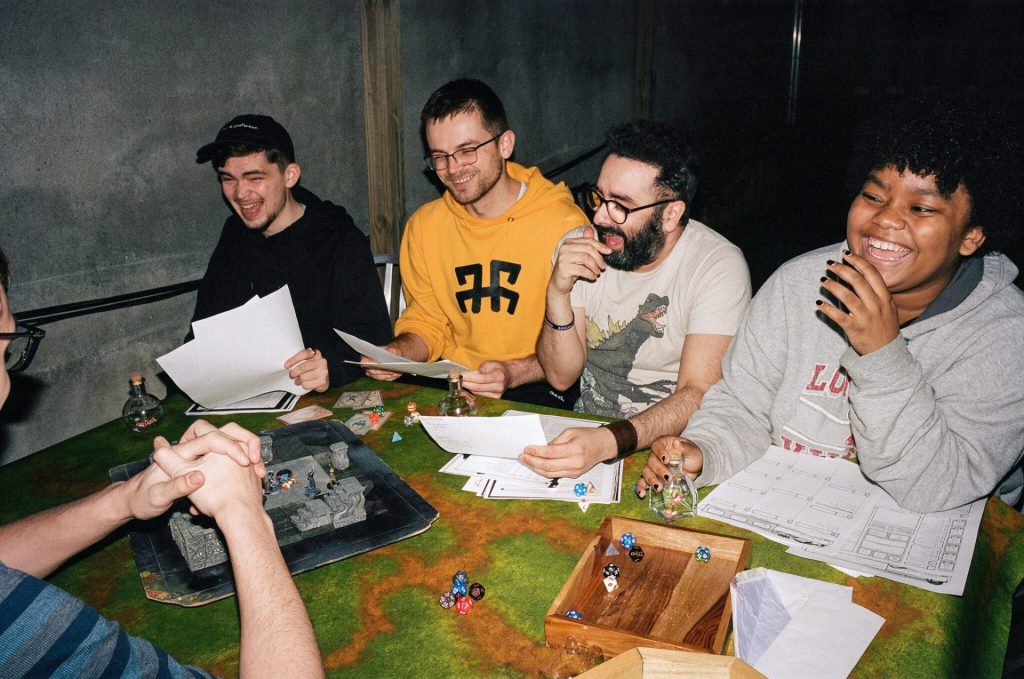Dungeons and Dragons is one of the most popular role-playing games we have today. It is a fantasy tabletop game that was introduced way back in 1974. The game was designed by Gary Gygax and Dave Arneson. The game’s origins may be traced back to miniature wargames, and its first set of rules was based on a modified version of Chainmail, which was released in 1971. It is widely acknowledged that the publication of Dungeons & Dragons marked the beginning of modern role-playing games as well as the role-playing game industry.
Additionally, D&D had a significant impact on video games, particularly the role-playing video game genre. The whole game setup revolves around the military formation wherein each player assumes a role. There is also a referee who is popularly known as the Dungeon Master. A lot of people are aware of Dungeons and Dragons but very few know its history. Let us explore more about how the masterpiece game was made.
Related: Stranger Things 4: The Trajectory And Dark History Of Vecna, The New Foe In Indiana Town
The Creation Of Dungeons And Dragons

The fantasy role-playing game known as Dungeons & Dragons was initially conceived and designed by two American game designers Ernest Gary Gygax and David Arneson. It was first released in 1974 by Tactical Studies Rules, Inc. (TSR). Chainmail and Blackmoor were the names given to these. The meteoric rise in popularity of the game has resulted in the production of tiny figurines, novels, television episodes, and movies centered around the Dungeons & Dragons franchise.
The role-playing game has been published in numerous editions. To everyone’s surprise each of which has introduced a variety of rule tweaks as well as new terminology. Interesting, isn’t it? The action of the game takes place in a fantasy setting reminiscent of the middle ages. Players work together to form a party that is then guided through a series of quests.
Almost immediately, Wizards of the Coast began publishing new and updated Dungeons & Dragons materials. Additionally, it granted an Open Gaming License for the game’s third edition (OGL). This meant that anybody could build new adventures and settings based on the D&D rules. Additionally, anyone could play those adventures and settings. Yes, you read right! Even you can create your own game. This resulted in the development of a variety of Dungeons & Dragons-inspired video games, such as Pathfinder and Starfinder, among others.
In case you missed: Is Prince Harry Still A Part Of The Invictus Games?
Origin And History Of The Game

When we hear Dungeons and Dragons, the first thing that hits our mind is ‘Stranger Things.’ This is because we think that the game has always been a part of our culture. However, it is not the case. Chainmail, a game set in the middle ages that simulates combat, was the ancestor of Dungeons & Dragons as we know it today. The game was designed to be a simulation of battles that took place in the middle ages.
However, there was a 14-page add-on that was published at the very end of the game that showed how the rules might be used in a fantasy environment. ‘Men & Magic’, ‘Monsters & Treasure,’ and ‘Underworld & Wilderness Adventures’ were the three booklets that were included in the original box set. This was for the Dungeons & Dragons role-playing game when it was first released. The box was made of cardboard with a woodgrain pattern.
The initial print run consisted of one thousand hand-assembled copies, and it was completely exhausted in under a year. This was the birth of a super popular game. The game’s setup is such that the players assemble a party comprised of characters of several classes and races. A Dungeon Master is responsible for narrating their journey while guiding the players through the story. The players decide how they want to react to the several situations that arise throughout the game.
Further, the outcome of those actions is determined by rolling dice. The dice have four, six, eight, ten, and twelve facets each. However, only the 20-sided die is what determines the majority of the game’s outcomes. As of 1977, Dungeons & Dragons was available at both a beginner’s and an advanced level.
With its release, the Monster Manual kicked off the Advanced Dungeons & Dragons product line. This led to the introduction of the players to 350 new adversaries to face in their campaigns. In 1978, a 128-page hardcover titled The Players Handbook was released. The major aim was to greatly expand the Advanced D&D universe. After two other basic Advanced Dungeons & Dragons hardcover rulebooks, TSR published the Dungeon Masters Guide in 1979.
You might also like to read: Elon Musk Opens Up About His Latest Favorite Video Games






